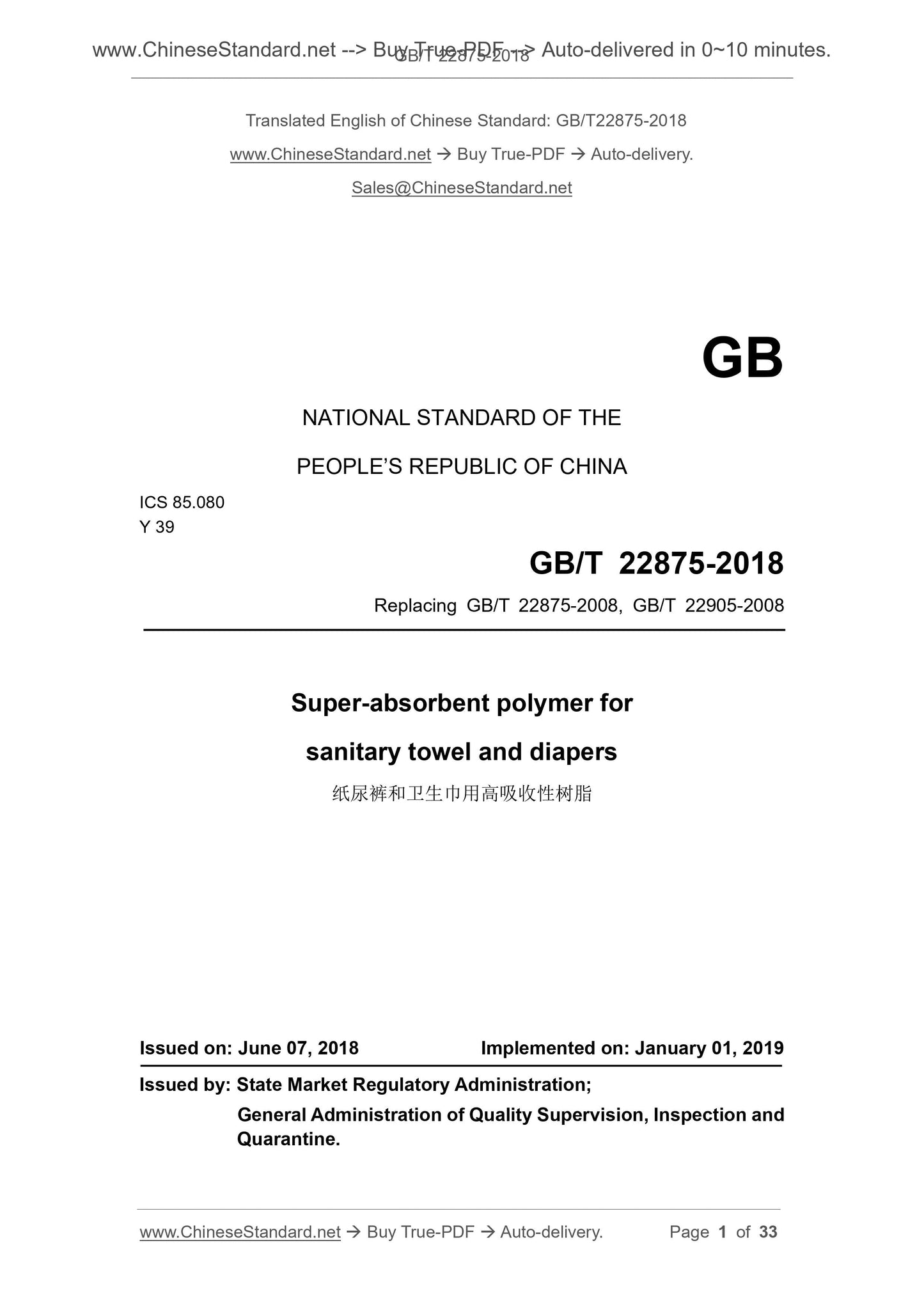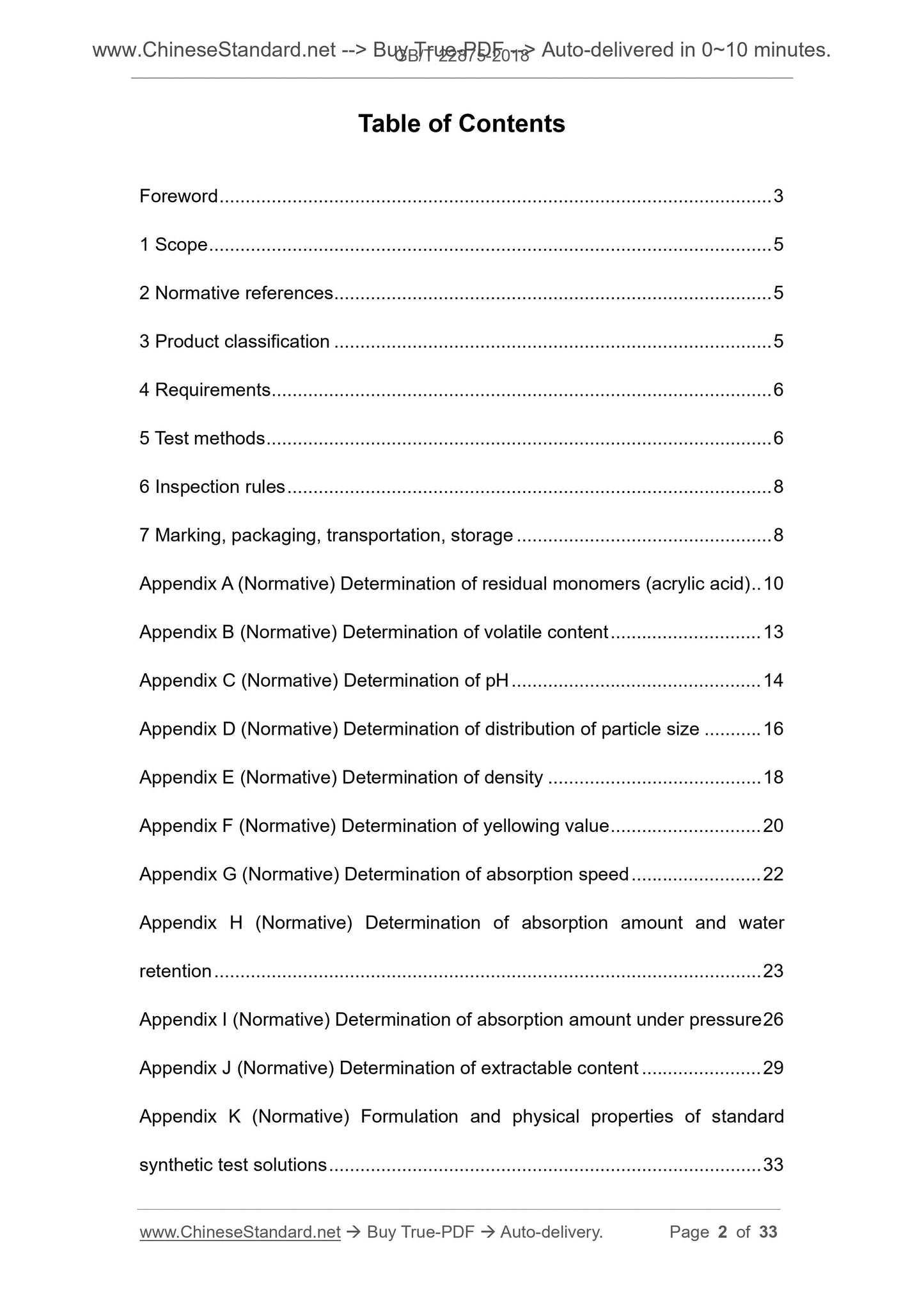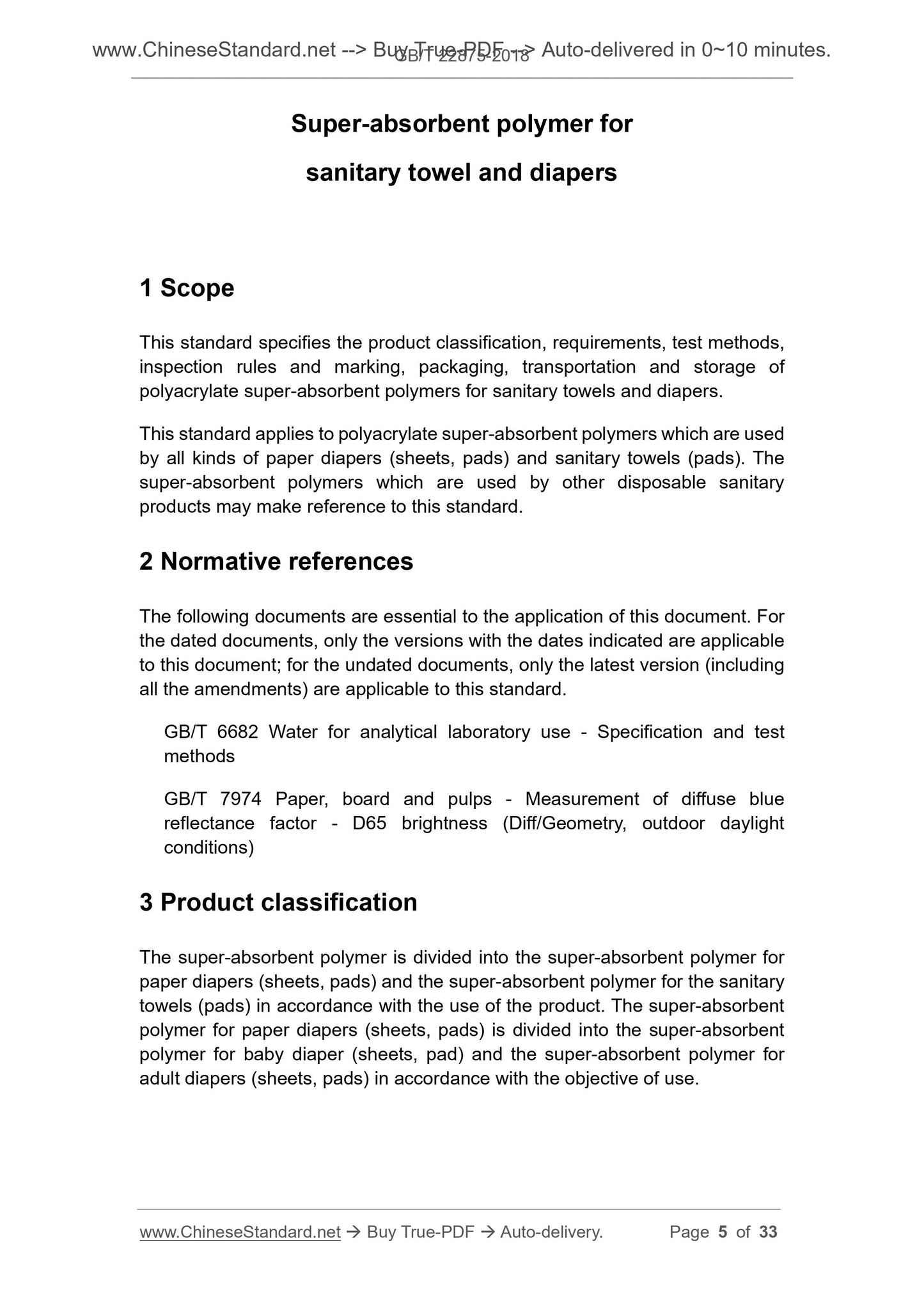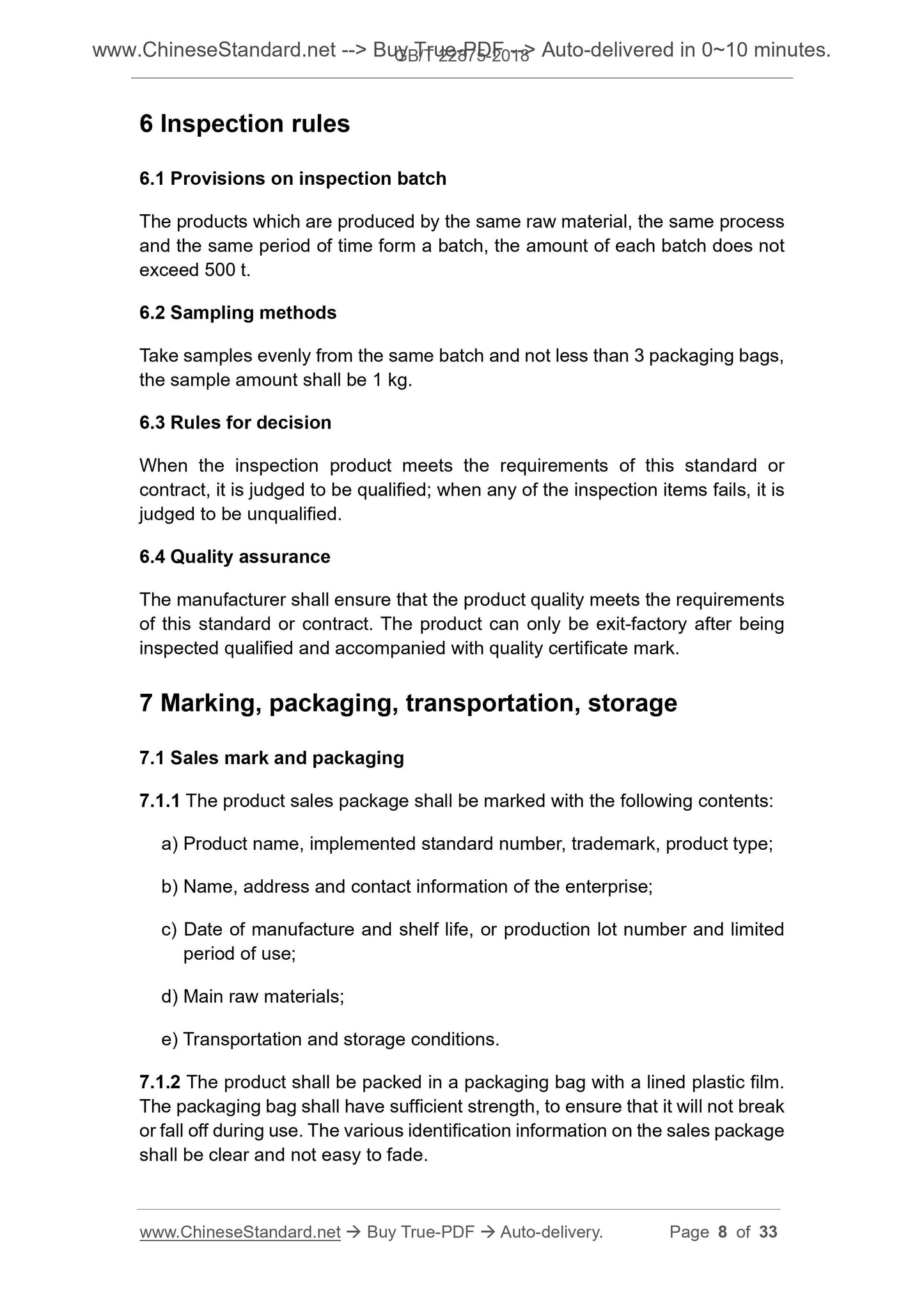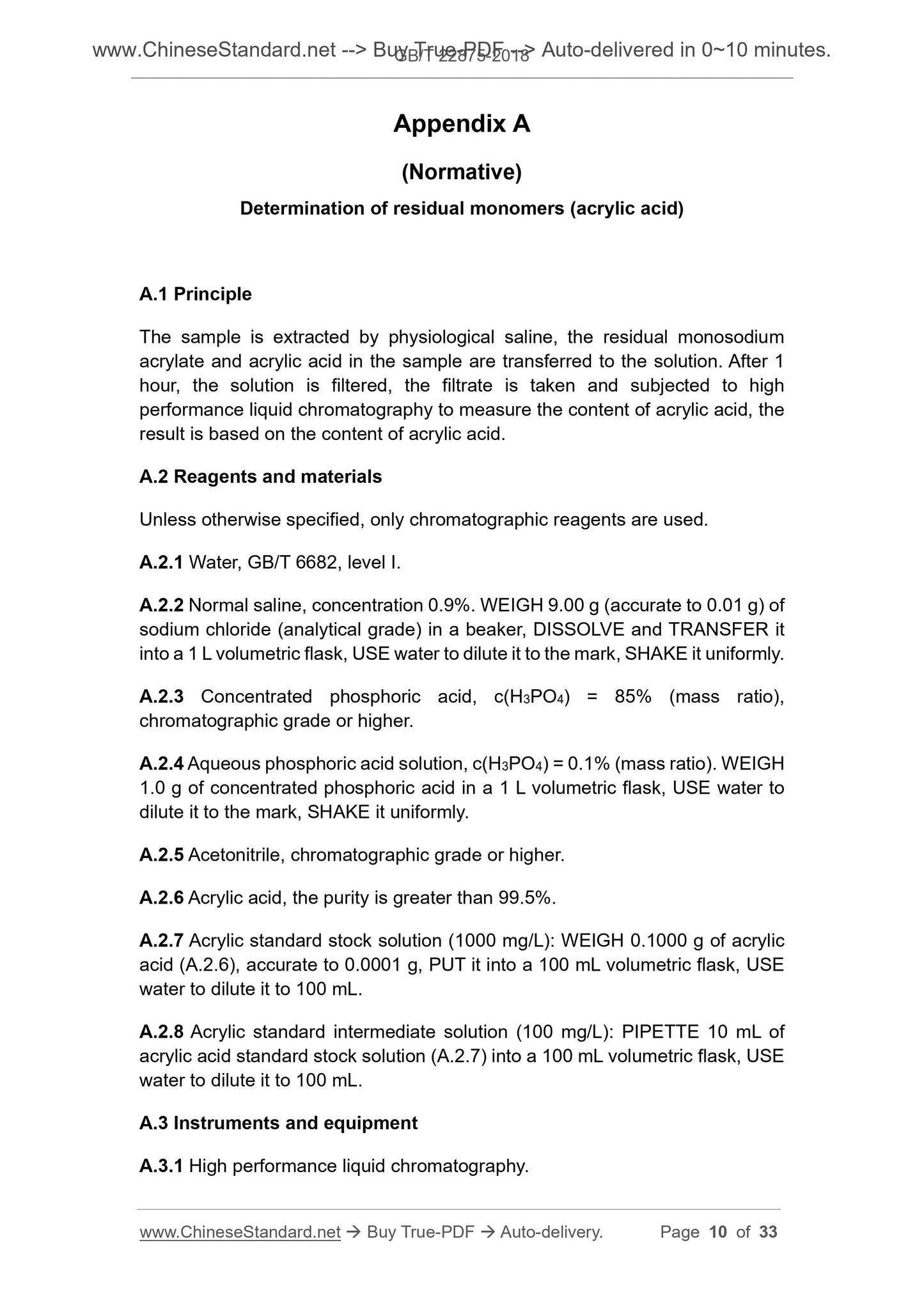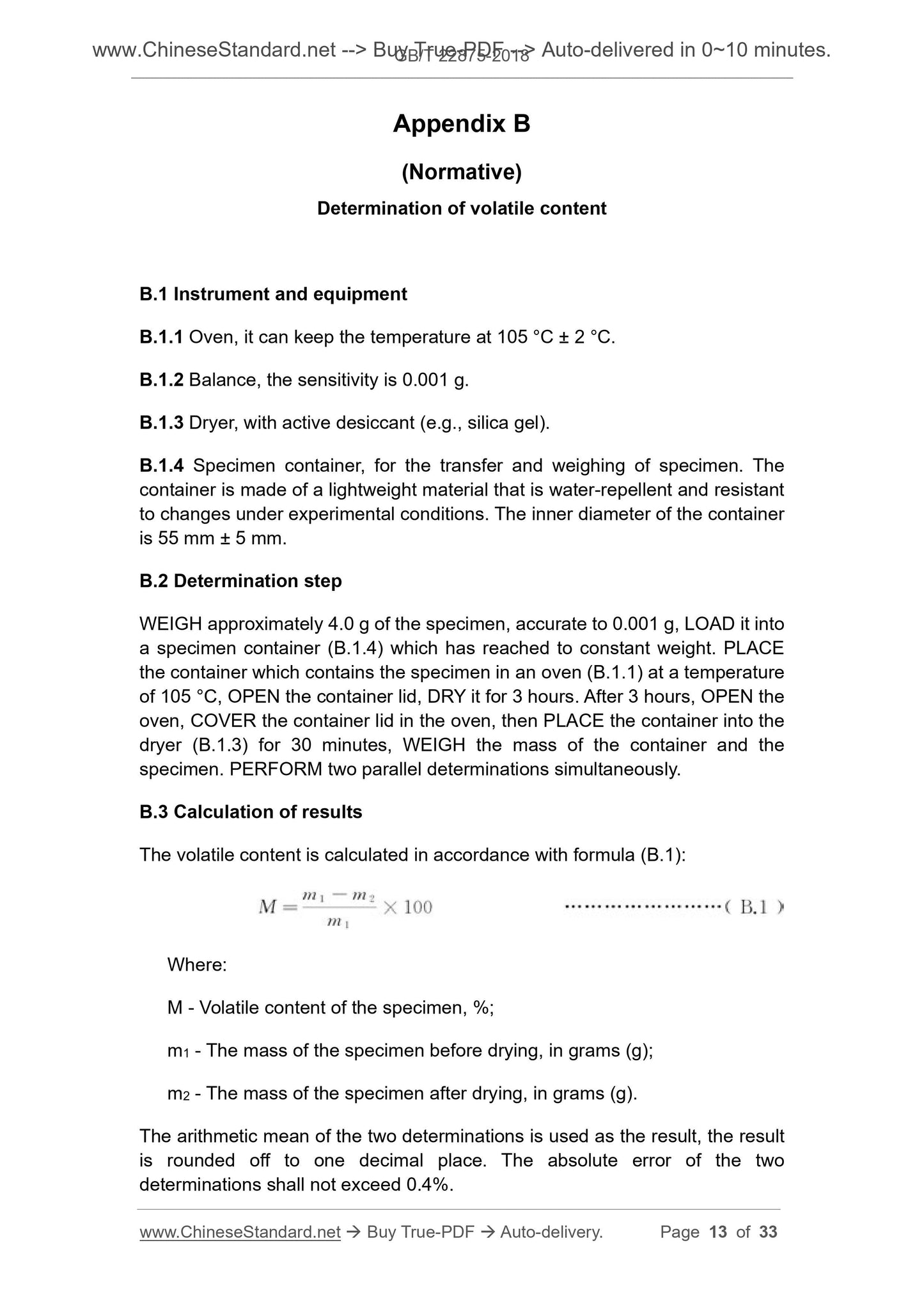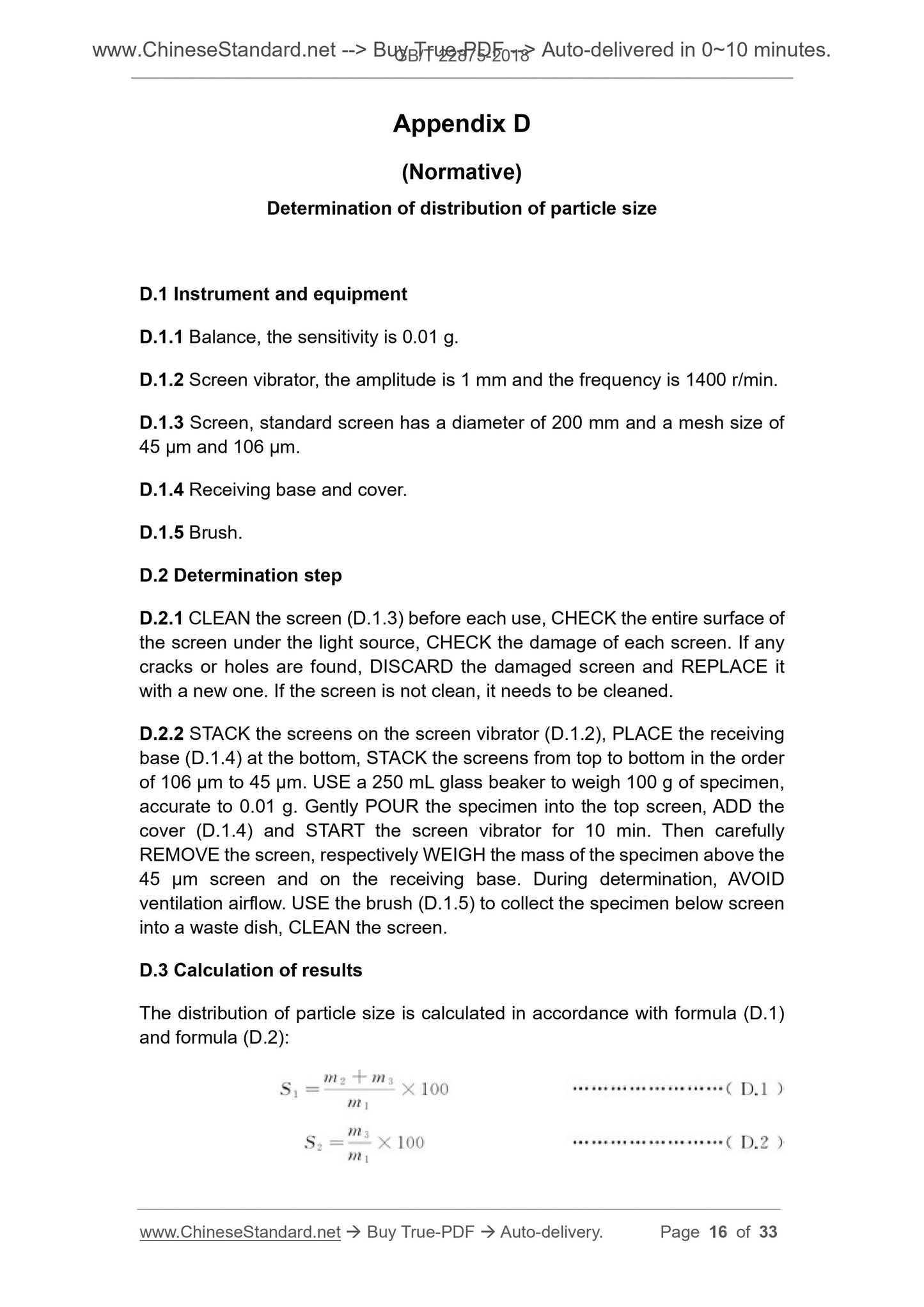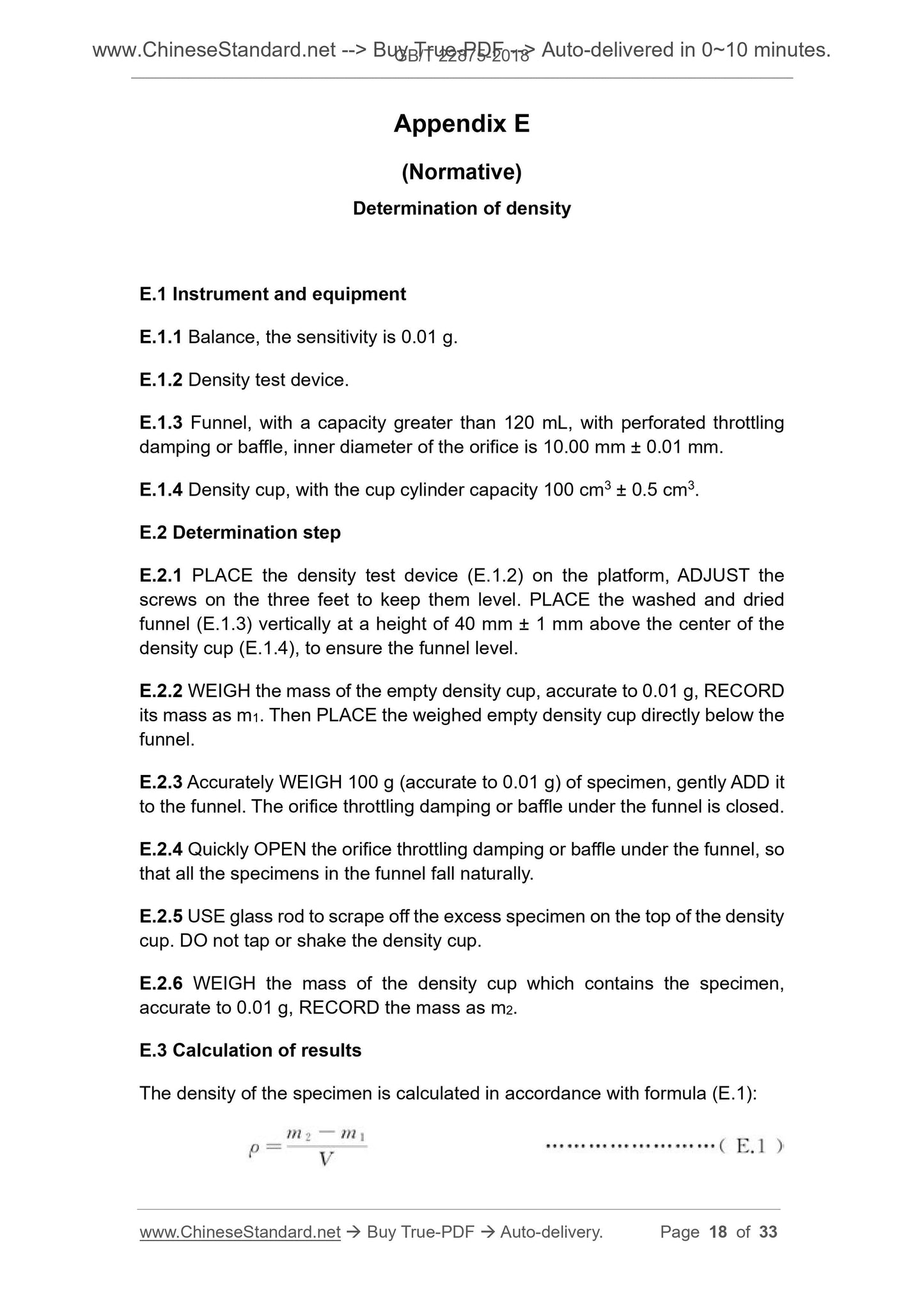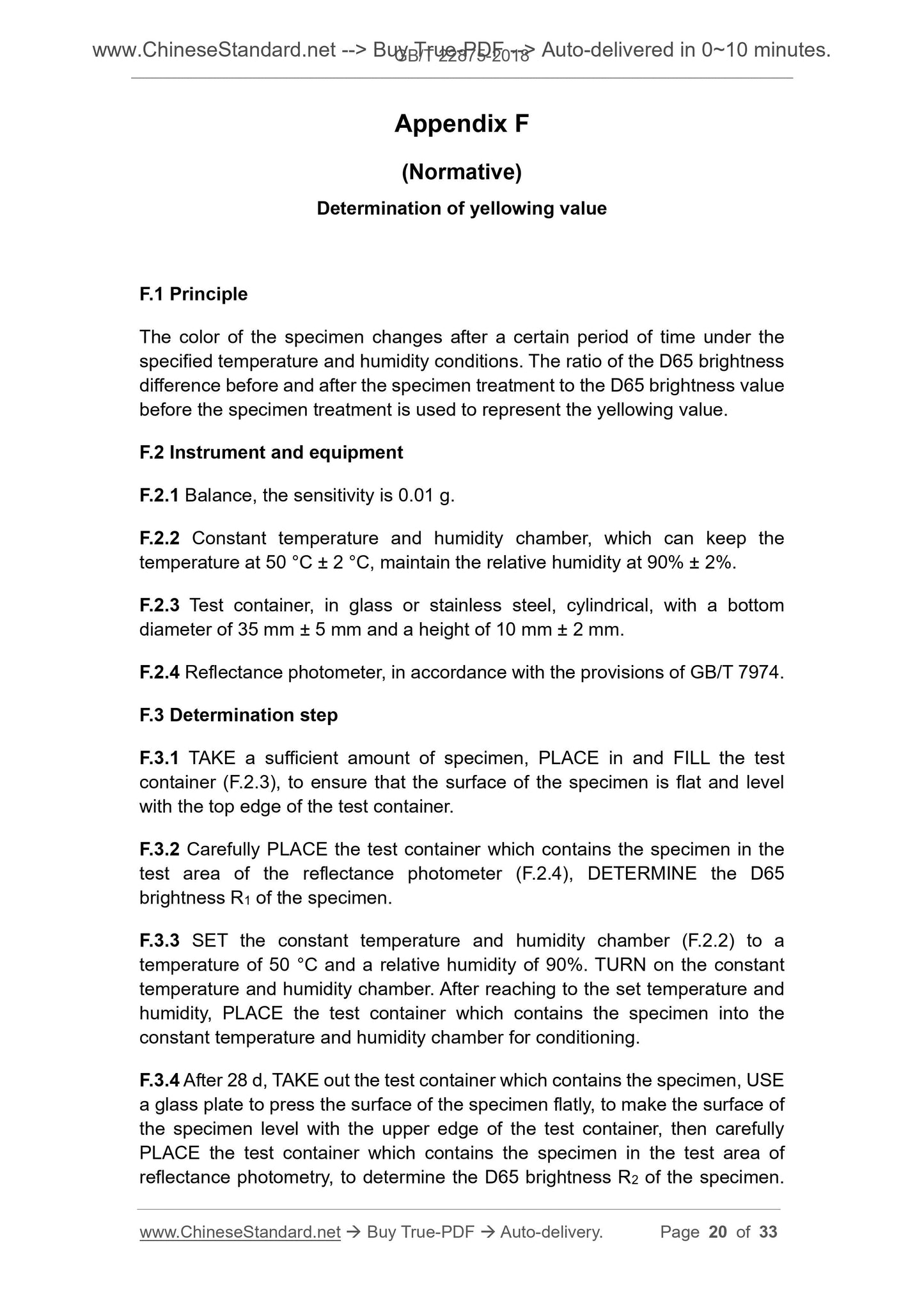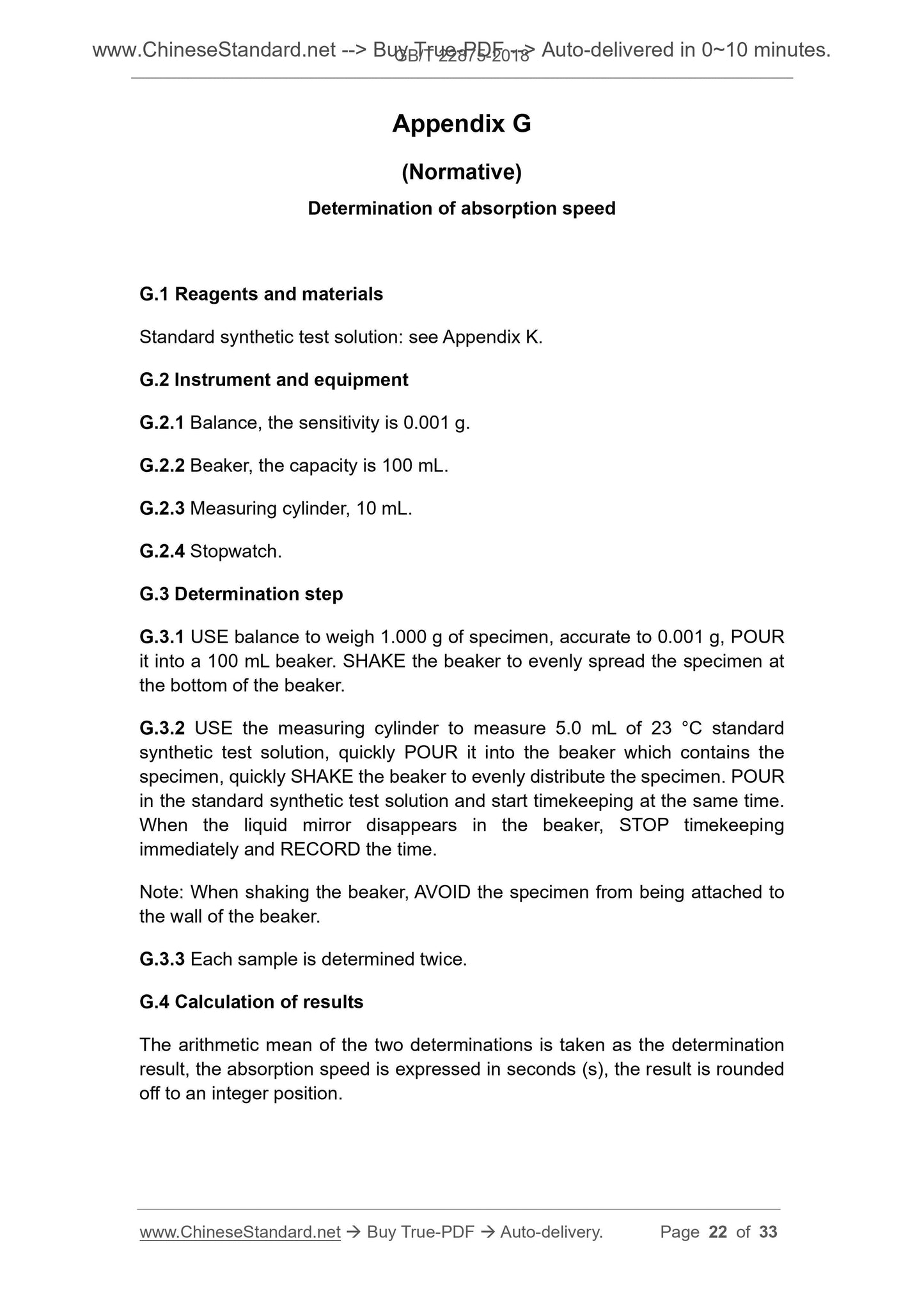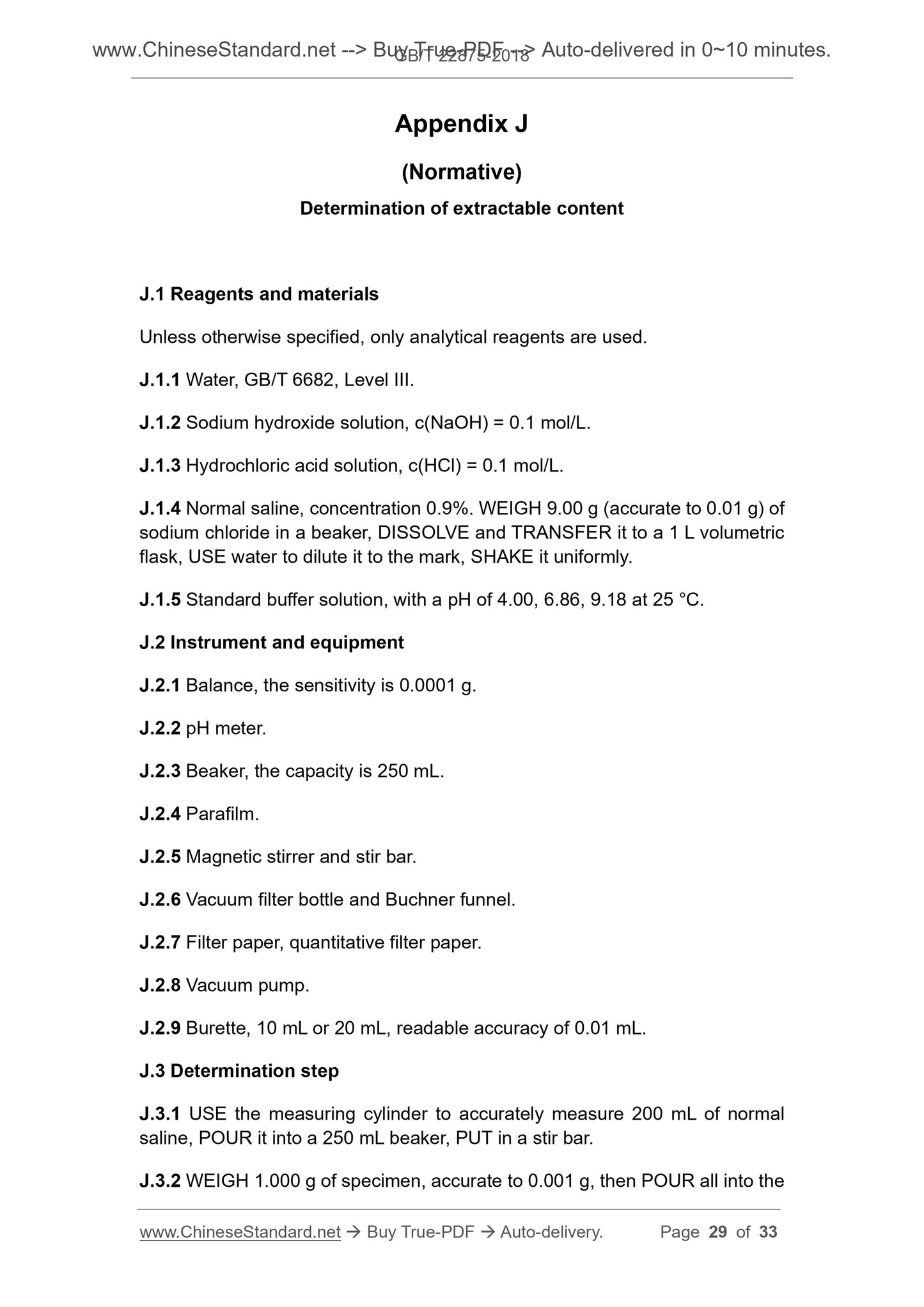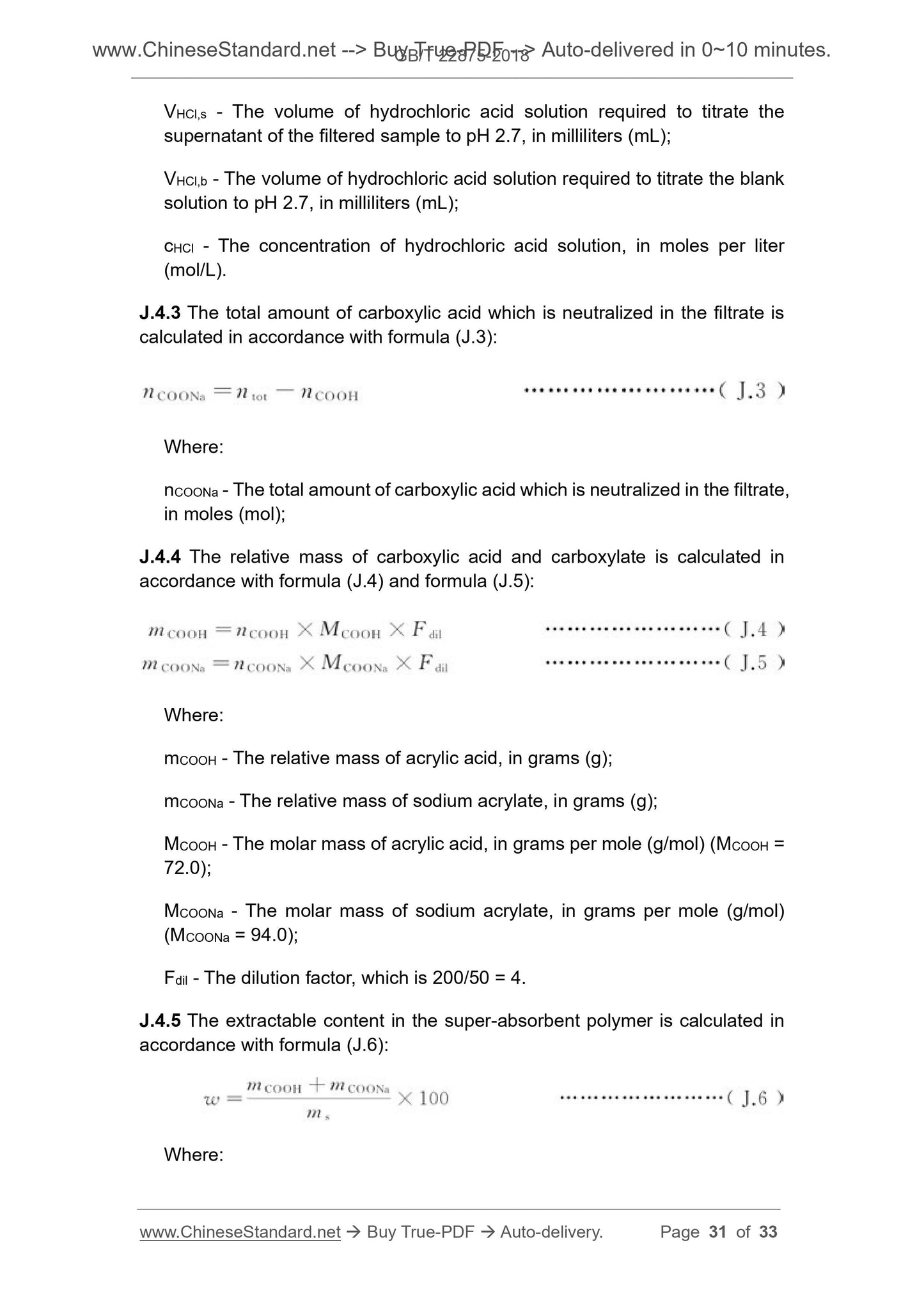1
/
of
12
www.ChineseStandard.us -- Field Test Asia Pte. Ltd.
GB/T 22875-2018 English PDF (GB/T22875-2018)
GB/T 22875-2018 English PDF (GB/T22875-2018)
Regular price
$150.00
Regular price
Sale price
$150.00
Unit price
/
per
Shipping calculated at checkout.
Couldn't load pickup availability
GB/T 22875-2018: Super-absorbent polymer for sanitary towel and diapers
Delivery: 9 seconds. Download (and Email) true-PDF + Invoice.Get Quotation: Click GB/T 22875-2018 (Self-service in 1-minute)
Newer / historical versions: GB/T 22875-2018
Preview True-PDF
Scope
This standard specifies the product classification, requirements, test methods,inspection rules and marking, packaging, transportation and storage of
polyacrylate super-absorbent polymers for sanitary towels and diapers.
This standard applies to polyacrylate super-absorbent polymers which are used
by all kinds of paper diapers (sheets, pads) and sanitary towels (pads). The
super-absorbent polymers which are used by other disposable sanitary
products may make reference to this standard.
Basic Data
| Standard ID | GB/T 22875-2018 (GB/T22875-2018) |
| Description (Translated English) | Super-absorbent polymer for sanitary towel and diapers |
| Sector / Industry | National Standard (Recommended) |
| Classification of Chinese Standard | Y39 |
| Classification of International Standard | 85.080 |
| Word Count Estimation | 22,279 |
| Date of Issue | 2018-06-07 |
| Date of Implementation | 2019-01-01 |
| Issuing agency(ies) | State Administration for Market Regulation, China National Standardization Administration |
Share
